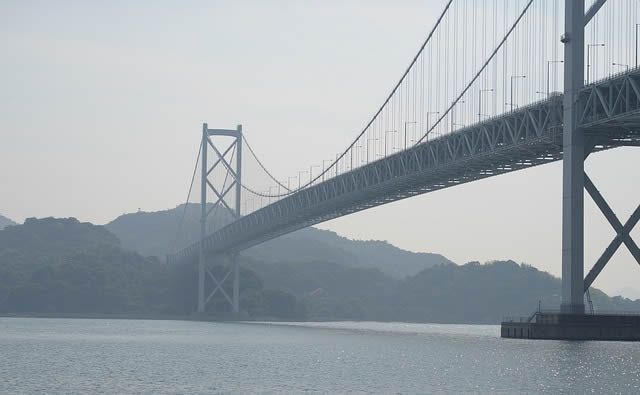先日から「Japan’s little-known seafaring past -「日本の知られざる海運の歴史」を読んでいます。

・「日本の知られざる海運の歴史」(1)
・「日本の知られざる海運の歴史」(2)
・「日本の知られざる海運の歴史」(3)
While territorial battles also were taking place on Japan’s mainland islands, the Murakami, Tanaka added “played a key role during the era by creating order on the Seto Inland Sea, thus facilitating trade, diplomacy and cultural exchanges”.
本土の島々でも領土争いが起きていた中、村上氏は「瀬戸内海の秩序を作り、貿易、外交、文化交流を促進する重要な役割を果たしました」と田中氏。
It was only once the Tokugawa Shogunate disbanded the Murakami, after reunifying Japan in 1615, that it was able to famously close Japan’s sea borders and implement its policy of sakoku (national seclusion).
1615年に日本を統一した徳川幕府は、村上氏を解散させたことで初めて、日本の海域を閉鎖し、有名な鎖国政策を実施出来た。
disband「解散する」。
That policy endured until 1853, when Commodore Perry of the US Navy entered Tokyo Bay with his fleet of “Black Ships” and forced the country to again engage with the world.
この政策は1853年、アメリカ海軍のペリー提督が「黒船」艦隊を率いて東京湾に入港し、再び世界との交わりを余儀なくされるまで続いた。
engage with「交戦する、掛かる、かみ合う、連動する、噛み合う」。
Today, the Murakami Kaizoku Museum is also a visitor centre for the “Policemen Pirates of the Setonaikai Sea”, the thematic title of a Japan Heritage programme that traces 42 heritage sites across the islands related to the Murakami and their time.
現在、村上海賊ミュージアムは「瀬戸内海の警官海賊」というテーマで、村上氏とその時代に関連する島々の42の遺産をたどる、日本遺産プログラムのビジターセンターにもなっている。
According to Tanaka, it is the most representative example of Japan’s seafaring history in the Japan Heritage programme, which recognises cultural properties that tell narratives of the country’s past.
田中氏によれば、日本の歴史を物語る文化財を認定する「日本遺産」の中で、最も代表的な航海の歴史であるとのこと。
海賊と聞くと、乱暴で無秩序な集団という印象が浮かびますが、村上氏は海を統べる人々、海の治安維持部隊、といった感じだったんですね。
貿易などもしていたため、徳川幕府は鎖国をするにあたって、彼らを解散させたと。
今まで全く知らない歴史でした。
理由は単純明快!「少ないコストでしっかり楽しく学べるから」。
私自身の経験(高機能でビックリ)をびっしり書いていますので、良かったら読んでみてください。
下のバナーからどうぞ!






